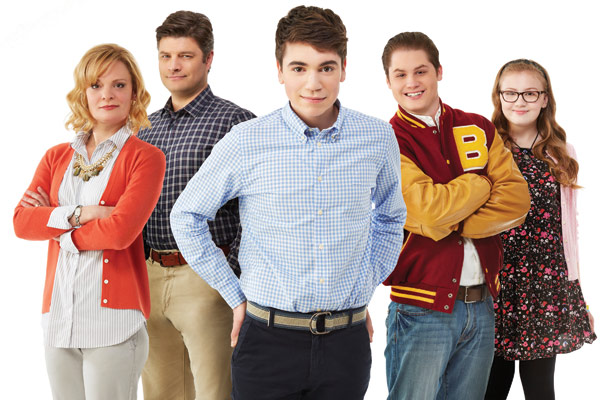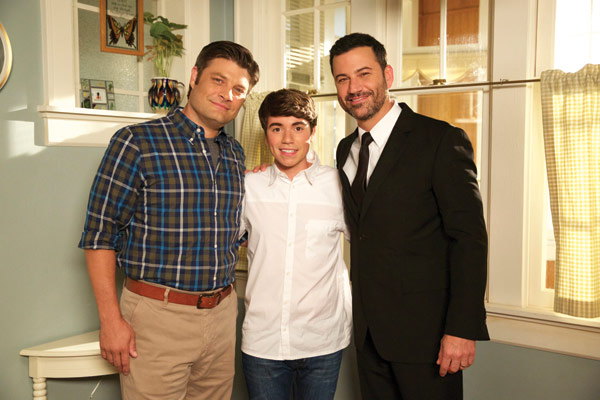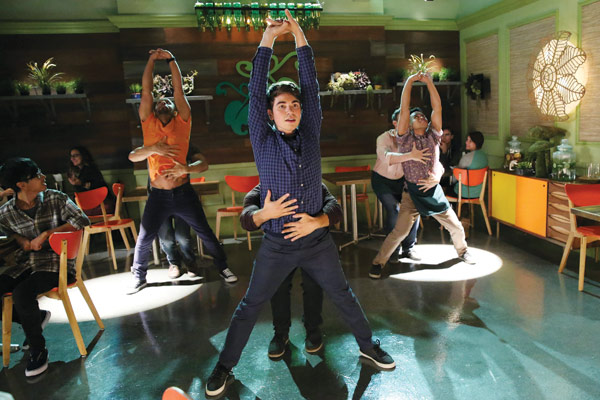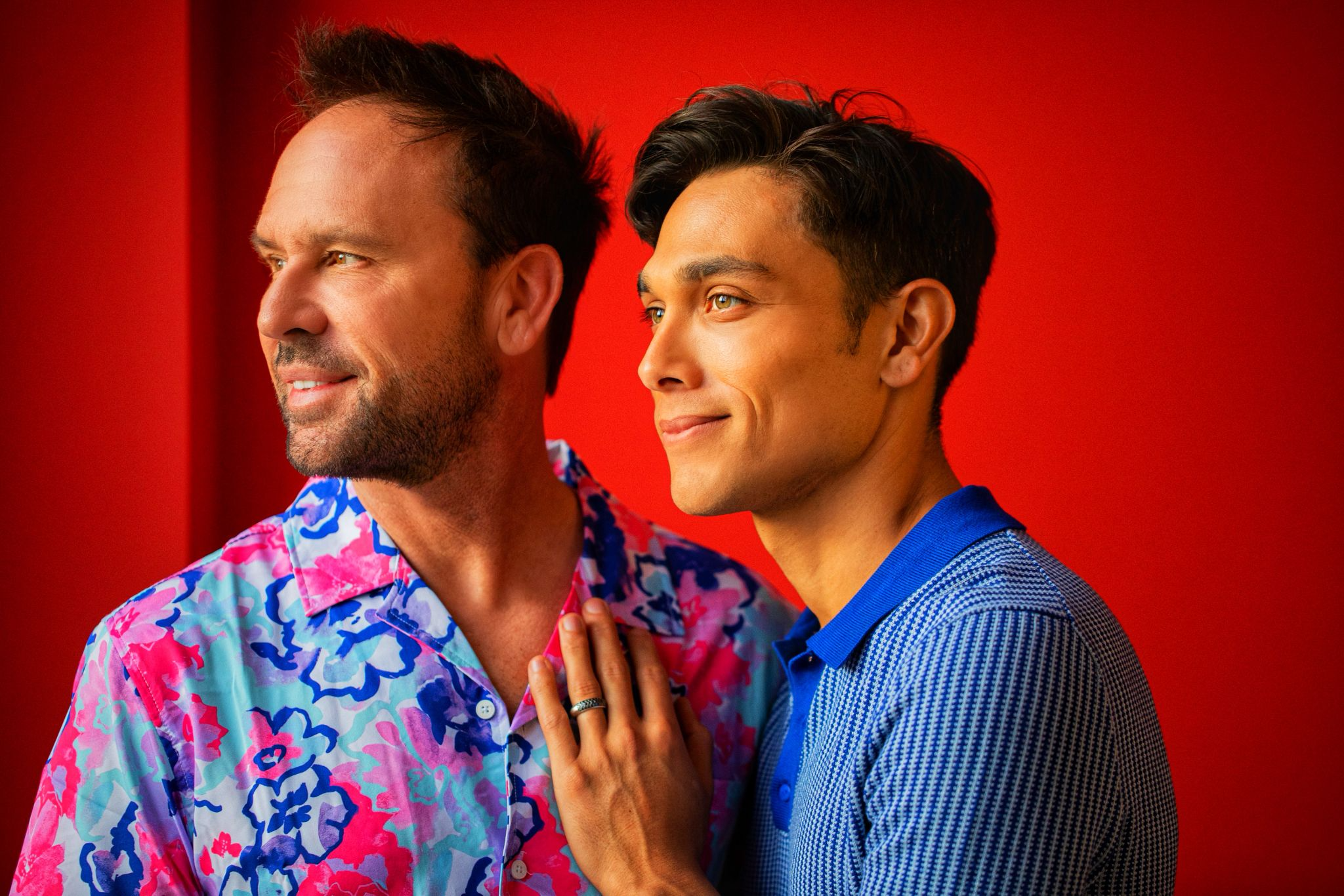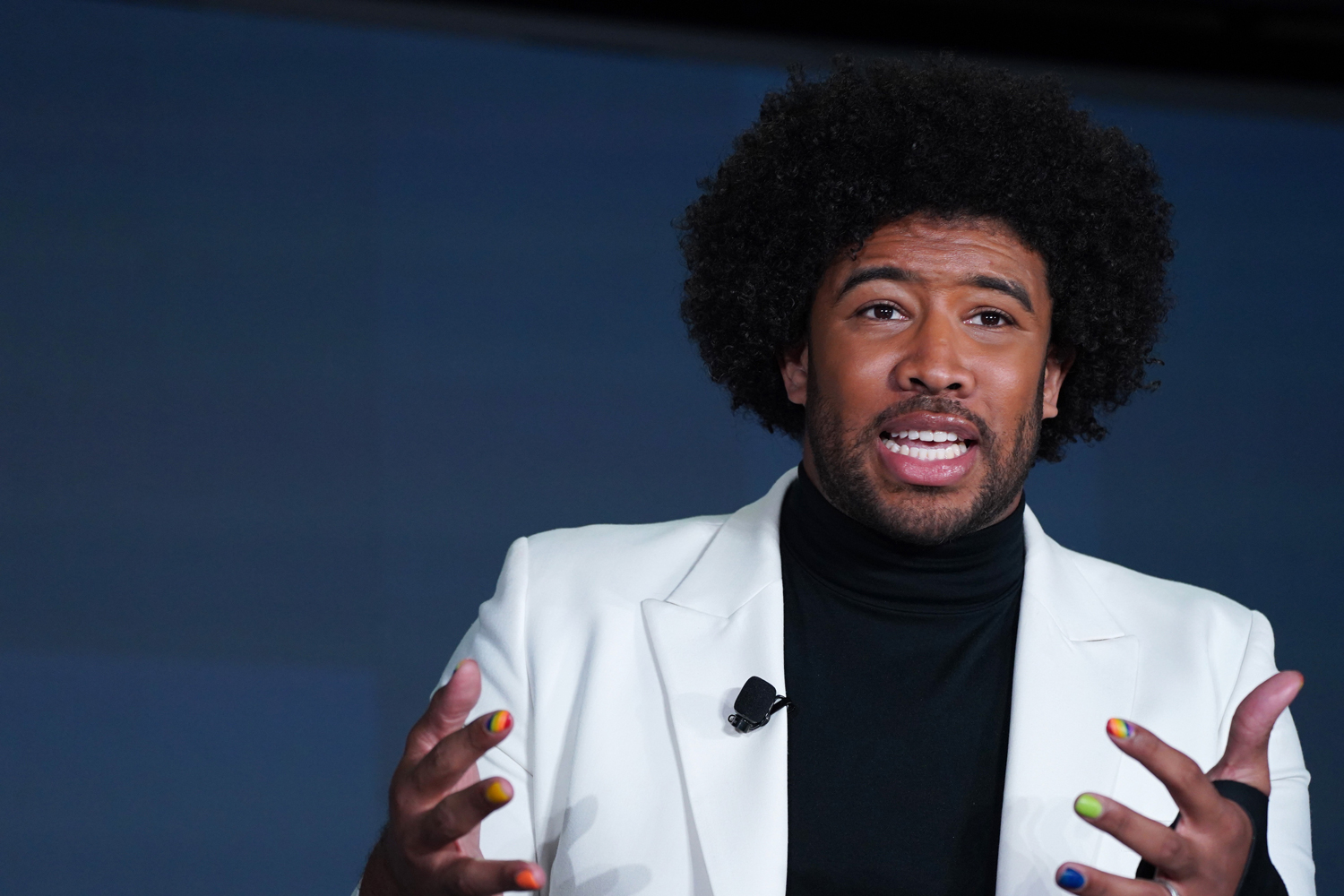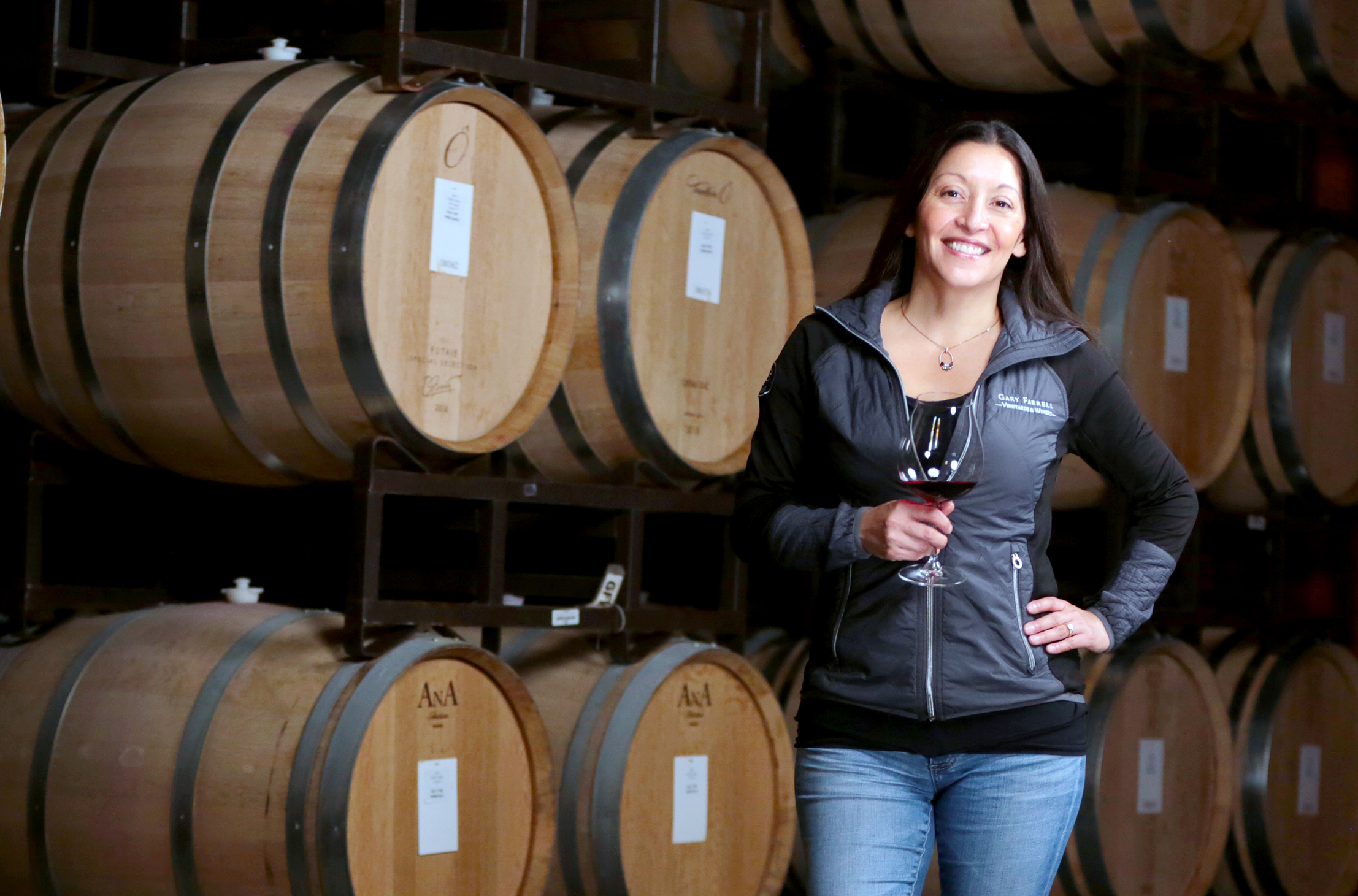In recent years, ABC has found success with sitcoms featuring colorful explorations of diverse families. But is the world ready to watch these Irish Catholics cope with their son coming out?
By Paul Hagen
I’m sitting in an auditorium in NYC’s lgbt center. on the
schedule tonight: a screening of The Real O’Neals, a comedy about a middle-class Chicago family coming to terms with their son’s coming out — followed by a conversation with some of the show’s cast and creators. The crowd bubbles with anticipation; for many present, this will be their first time seeing the show. Some have shown up solely because of the fact that the post-screening discussion is to be moderated by Real O’Neals guest star and gay national treasure, Tim Gunn.
As the lights dim, there’s a last minute rush of people into the few empty seats around me. In the darkness, it takes me a moment to recognize that the person who has just sat down next to me is Noah Galvin, the 21-year-old actor who plays the show’s central character, gay teen Kenny O’Neal. It’s a little surreal that the person coming out on screen in front of me is also sitting right next to me.
When I ask Galvin privately about it a few weeks later, he tells me that watching the show with a crowd was a revelation for him. “I hadn’t really gotten to watch the show with anyone other than my friends and my cast,” Galvin tells me. “Being in a room filled with LGBT folk, who not only appreciated it for being a funny TV show but — on top of that — a show that is doing something they have never gotten to see before was very satisfying.”
David Windsor, one of the co-creators of The Real O’Neals, was also at the screening. He tells me he’s come to enjoy sharing the show with a live audience. “I’ve gotten used to it because we’ve been doing it more and more,” he says. “People are laughing at all the right spots; so that always feels good.”
Many of these spots are the show’s fantasy sequences, which jump from the O’Neals’ everyday life and into Kenny’s creative unconscious. Sometimes they reveal Kenny’s concerns about how the world perceives him, e.g. in one episode, he pictures himself roller skating through his high-school hallways, wearing short shorts and waving rainbow flags to a disco beat. “I think the dance number in The Real Lent was my favorite,” says Galvin of the brief-but-spectacular display of acrobatic choreography that reflected Kenny’s exuberance over his first date with a guy. “Filming it felt like the closest I’ll come to dancing in a music video. Or being Beyonce,” he says.
Windsor explains that they initially came up with the idea for these sequences when they realized, “until Kenny comes out, he doesn’t have anyone that he can talk to about his situation.” But once the door to Kenny’s unconscious gets opened, they decided to make the most of it. “It also allows us to get people like Tim Gunn to do the show, which was so exciting, and Jimmy Kimmel — and Jesus shows up,” Windsor adds.
One fantasy introduces Kenny to a “Council of Specialty Love,” which educates him on the many modern subsets of gay men (bears, otters, etc.). I ask Galvin what he thinks of these kinds of labels. “You can embrace it and say there are a million different things to be: let me find my niche. Or you can go on your merry way and ignore it all,” he observes. “I have never felt that those divisions have gotten in the way of relationships or my being included in the community.”
Windsor tells me his team made it a priority to make sure that any fun poked at religion or the gay experience was grounded in reality. “We had five or six gay writers; we had four, I think, Catholic writers. We were constantly checking in with them to make sure that everything felt authentic.”
Though Windsor is not gay, he was raised by two gay dads; so he lends that experience to crafting the show. “Growing up, I didn’t know any other kids who had gay parents. So it felt very solitary to me, and I think that’s what I related to in the Kenny character — that he feels very alone in all of this. Until he comes out, he doesn’t really have anyone to talk to. Luckily, after he does, he has his brother and his sister.”
Indeed, one of the most refreshing things about The Real O’Neals has been how supportive Kenny’s siblings are. Galvin tells me that it feels true to the millennial attitude toward homosexuality. “For my generation, we grew up in post-Ellen America. If you didn’t accept the LGBT community, you were seen as less evolved,” Galvin says. “It may be a surprise to them that their brother is gay, but it’s a complete non-issue.”
The reactions of Kenny’s parents also defies tradition. “More often, in any sort of coming out story, it’s the football father who has a problem with the queeny child and the mother who loves unconditionally,” Galvin points out. “I like to think we’re turning the tables a bit, having the majority of the pushback come from the mother.”
Speaking of mothers, back at the LGBT Center, the screening portion of the evening is complete, and Galvin, Gunn and Windsor are taking the stage with Martha Plimpton, who plays Eileen, the matriarch of the O’Neal household. The fact that Plimpton is actually an outspoken supporter of gay rights makes it easier for viewers to accept it when her character is often the least evolved on the issue of Kenny’s sexuality. “I thought this was an interesting opportunity for me,” she tells the audience. “I’ve never played a homophobe before.”
Plimpton and Galvin clearly share a special bond. “Martha Plimpton and I are very very close,” Galvin explains. “I love her dearly. I think our relationship has done nothing but strengthen Kenny and Eileen’s. In the pilot, she calls Kenny her favorite child, and I think that’s true. Eileen loves Kenny the most, and when he comes out, that doesn’t change Eileen’s love for him. She was raised with a certain set of very strict, limiting beliefs and it’s very hard for her to amend those.”
How else does Galvin feel a kinship with Kenny? “I like to say Kenny is a younger, book-smart version of myself,” he says. “I came out a few years before Kenny did; so yes, I was pretty certain of my sexuality by his age, but I struggled more than he did. He has adversity from his community and mother; mine came from within.”
I ask Galvin whether it feels strange that his sexuality so often factors into conversations about the show. Galvin emphasizes that it was his choice to be open about being gay in this context. “I think it’s important for me to talk about it because of the character I’m playing. I want kids to be able to relate as much as possible, and I think — based on the responses and messages I get daily from people who want to share or ask questions or thank me — it’s been successful, he says.”
As part of the Center’s post-screening conversation, Tim Gunn brings up the the “controversy” generated by certain very conservative organizations calling for a boycott of the The Real O’Neals. Gunn suggests accepting the fact that the Catholic League had come out against the show as “a mark of pride.” Windsor agrees, mentioning that he intends to hold onto the full-page New York Times ad that the League purchased to protest the show — and have it framed.
I ask Windsor if he thought the organizations who had put forth these outsize negative reactions had ever really given the show a shot. “You’d have to ask them, but I don’t think that they have,” he says. “We wanted to show both sides of this argument. Because the truth is: There are a lot of people out there that believe the way that Martha’s character believes – that [homosexuality] is not right. But we also wanted to be able to let them have conversations … or at least be open to the idea.” He admits that the knee-jerk responses can be frustrating. “Even before anyone had even seen the show, they were already against us.”
It may be Plimpton who sums up the “outcry” best, pointing out these kinds of groups often have fairly small memberships made to seem more significant with important-sounding names and vocal spokespeople. “It’s like a mouse in the kitchen,” she says. “It makes a lot of noise and s**ts all over everything, but in the end: it’s a just a tiny little thing.”
Though at the time of our conversations, ABC had yet to announce whether The Real O’Neals would be returning for a second season, both Windsor and Galvin have ideas about some of what they’d like to see out of future episodes. “I think we want to keep going with Eileen educating herself more about her son’s homosexuality,” Windsor says. He also wants to continue to bring more of Kenny’s coming-of-age milestones into play. “We’re talking now about what those sort of big moments are for Kenny, now that he is out,” says Windsor. “It would be fun to see him go to a Pride event.”
Meanwhile, Galvin wouldn’t mind more chances to stretch his musical muscles. “I would love to do some singing on the show. I don’t want the show to turn into Glee, but I have some good ideas that I hope will make it into Season Two — if we get a Season Two. I take that back: WHEN we get a season Two. Fingers crossed.”
Whether or not it helps their chances of getting another season, Galvin says it felt special to share that evening at the Center with an audience that included LGBT people who’d suffered years of hardship and inequality. “Our show would not be what it is without that struggle. They got to witness the benefits of their labor,” he says. “Their work made a difference and getting to watch them watch the show was beautiful.”
New episodes of The Real O’Neals debut Tuesdays at 8:30pm Eastern on ABC. Catch up any time on abc.com or hulu.com and follow them on Twitter @therealoneals. Read more of editor Paul Hagen’s interviews with the show’s principals here.
Last modified: April 17, 2018

